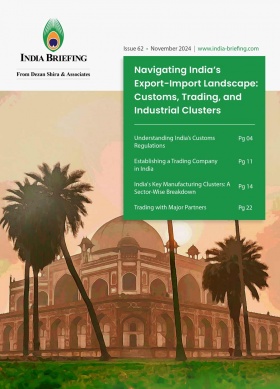India Gains Temporary Relief as Trump Suspends Reciprocal Tariffs for 90 Days
US President Donald Trump has announced a temporary halt in the implementation of reciprocal tariffs for most of America’s global trading partners, introducing a 90-day suspension that applies to all countries except China.
In a statement issued on April 9, 2025, Trump confirmed that over 75 countries, including India, had reached out to US officials to initiate diplomatic discussions aimed at resolving the tariff dispute. He stated that he had authorized a limited pause on the imposition of reciprocal tariffs. This decision offers temporary relief to Indian exporters, who had been bracing for a 26 percent duty on goods entering the US market.
Nevertheless, it is important to note that the baseline tariff of 10 percent, which came into force on April 5, remains in effect and continues to apply to all countries, including India.
Base tariff to remain in place
While the 26 percent duty rate on Indian goods has been put on hold for 90 days, several tariffs announced by the US administration will continue to apply:
- A general 10 percent tariff on all imported goods, which has been effective since April 5, 2025.
- Sector-specific 25 percent tariffs targeting steel, aluminum, and automobile imports have been in force since April 2.
- Canada and Mexico remain subject to a 25 percent tariff on any products not covered under the United States-Mexico-Canada Agreement (USMCA), which was established during Trump’s first term.
Rethinking a comprehensive FTA with the US
According to the Global Trade Research Initiative (GTRI), India should proceed cautiously when considering a comprehensive free trade agreement (FTA) with the US. The think tank warns that such a deal could compromise India’s policy autonomy and adversely affect sensitive sectors like agriculture, automobiles, and pharmaceuticals.
GTRI founder Ajay Srivastava has recommended India pursue a “zero-for-zero” tariff agreement limited to 90 percent of industrial goods while excluding sensitive categories like agriculture and automobiles. He added that India should prioritize ongoing FTA talks with the European Union (EU), the UK, and Canada and explore value chain partnerships with countries like China, particularly in chemicals, machinery, and electronics.
Indian exporters rush against the US tariff deadline
Prior to the announcement of a halt on reciprocal tariffs on India, several reports indicated heightened activity among exporters attempting to preempt the financial impact of the new tariff regime. Many Indian traders had accelerated shipments to the US in a bid to avoid the increased duties before enforcement deadlines took hold.
According to a Business Standard report published on April 9, 2025, Indian exporters dealing in high-value goods—particularly smartphones, engineering products, and automobile components—rushed to expedite shipments in hopes of clearing customs before the higher duty rates were enforced.
The last-minute surge in trade activity reportedly led to a notable uptick in cargo movement at India’s busiest ports and airports. As per industry watchers, India’s outbound cargo volumes rose sharply—by as much as 18 to 22 percent over the past week—as exporters raced against time.
The urgency was further driven by a specific clause in the original US executive order on the reciprocal tariff released on April 2, 2025. It stipulates that those goods loaded onto vessels or already in transit before 12:01 a.m. Eastern Daylight Time on April 9, 2025 (equivalent to 9:30 a.m. IST), and subsequently cleared for consumption in the US, would not be subject to the newly imposed tariffs. This loophole prompted a wave of early shipments, with some exporters even altering logistics strategies to fast-track consignments before the cutoff.
READ: US Hikes Tariff on Indian Imports to 26%: All You Need to Know
Central government’s response and strategy
India’s central government is reportedly closely monitoring the situation. The Ministry of Commerce and Industry stated on April 3, 2025, that it is assessing the potential effects of the measures introduced by the US administration. Additionally, the commerce department, under the Union Ministry of Commerce and Industry, has initiated discussions with Indian exporters and industry stakeholders to understand how the newly imposed tariffs might impact trade. Reports state that officials have underscored the importance of a measured response, emphasizing alignment with the broader vision of keeping the Indian economy resilient and stable amid the tumultuous global trade scenario.
India has, so far, not announced any retaliatory action against the US but has stated that it is examining both the short-term effects and potential long-term opportunities that may emerge.
Key takeaway
As the reciprocal tariffs come to a halt for 90 days, both countries find themselves at a critical juncture. The pause opens the door to renegotiation and dialogue. For Indian exporters, however, the immediate priority remains adapting to the new duty rates swiftly and minimizing the impact of the new US tariff barrier.
About Us
India Briefing is one of five regional publications under the Asia Briefing brand. It is supported by Dezan Shira & Associates, a pan-Asia, multi-disciplinary professional services firm that assists foreign investors throughout Asia, including through offices in Delhi, Mumbai, and Bengaluru in India. Readers may write to india@dezshira.com for support on doing business in India. For a complimentary subscription to India Briefing’s content products, please click here.
Dezan Shira & Associates also maintains offices or has alliance partners assisting foreign investors in China, Hong Kong SAR, Dubai (UAE), Indonesia, Singapore, Vietnam, Philippines, Malaysia, Thailand, Bangladesh, Italy, Germany, the United States, and Australia.
- Previous Article SEBI Amends ICDR Regulations for Capital Raising and Disclosure Norms
- Next Article








